Kildare aviator calls for new Tuskar crash inquiry
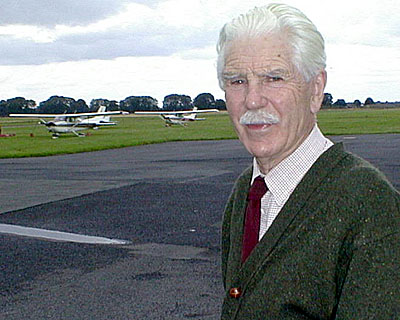
LEIXLIP, 7 March 2000: by Brian Byrne & Trish Whelan. Ireland’s most veteran pilot, Straffan-born Captain Darby Kennedy, has called for a new investigation into the Aer Lingus Viscount crash off Tuskar Rock in 1968 that claimed almost 60 lives but has never been satisfactorily explained. He says he believes there are things about the tragedy ‘that should be exposed’ and he supports a demand for a public inquiry.
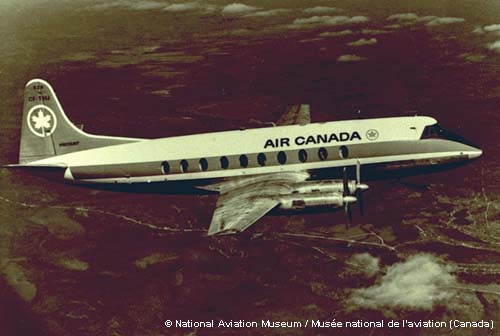 Captain Kennedy, the founder and chairman of Weston Aerodrome at Leixlip, has a special interest in the truth being told. He was an Aer Lingus pilot himself at the time, and had regularly flown the same route as the doomed flight 712 (on a plane similar to the Air Canada one on left).
Captain Kennedy, the founder and chairman of Weston Aerodrome at Leixlip, has a special interest in the truth being told. He was an Aer Lingus pilot himself at the time, and had regularly flown the same route as the doomed flight 712 (on a plane similar to the Air Canada one on left).
“But for the grace of God, I could have been on it,” he told KNN in an exclusive interview, adding that throughout his 65-year flying career, he had come close to tragedy several times and had only survived ‘because God was my co-pilot’.
His own view of the accident doesn’t relate at all to the story that the ill-fated plane was hit by a British missile. Indeed, he believes his own experiences as a commercial pilot at the time hold answers that would come out if there was now a public inquiry. “Stuff has been dragged under the carpet. A whole lot that was investigated but never published ... because they hoped it would go away.”

Captain Kennedy discounts the missile theory as a ‘story that was put out’, that doesn’t stand up simply because where the accident happened was outside the range of any missile then available in Britain. And he says the other theory of a collision with another plane is equally unlikely because wreckage of another aircraft was never found.
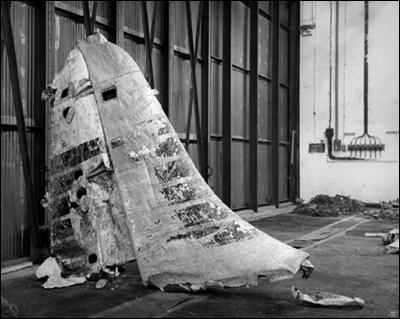 Quite simply, he believes that failure of a control cable to one of the trim tabs on the tailplane caused the aircraft to rapidly go out of control and spin into the sea. It’s a theory backed up by the fact that part of one of those particular control surfaces was found on a beach north of Wexford, a considerable distance before where the main bulk of the wreckage was found.
Quite simply, he believes that failure of a control cable to one of the trim tabs on the tailplane caused the aircraft to rapidly go out of control and spin into the sea. It’s a theory backed up by the fact that part of one of those particular control surfaces was found on a beach north of Wexford, a considerable distance before where the main bulk of the wreckage was found.
The doomed flight took off from Dublin and reached what pilots call ‘the top of the climb’ just over Wexford. The procedure was to cruise as far as Bristol, then begin the descent towards London. “At the top of the climb, you would take the automatic pilot out and you’d trim the plane manually - you had a wheel beside you which worked one of these little fellows way back on the tail, and trimmed the aeroplane out so you could let go of the controls and stay put, and then you put in your autopilot again.
“My feeling is that one of these little wires broke ... the trim tab set up what we call ‘flutter’. If you get flutter, the bloody thing goes mad and the control column would do this [he demonstrated severe juddering] ... then something broke away. The pilot then attempted to slow down, put out the wheels and flaps and things like that to slow her down to try and regain control. But during that time he got into a spin and went down.”
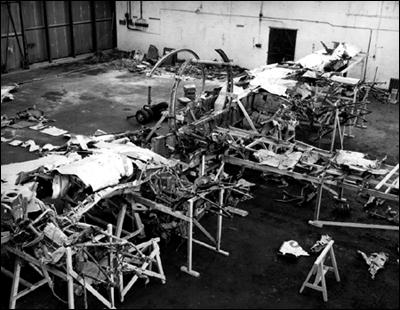 It’s a scenario which Captain Kennedy believes did not get adequate examination in the subsequent inquiry, but in his own experience of the time, planes could be parked in unsatisfactory conditions during their layovers in overseas airports, with consequent danger of damage to control surfaces.
It’s a scenario which Captain Kennedy believes did not get adequate examination in the subsequent inquiry, but in his own experience of the time, planes could be parked in unsatisfactory conditions during their layovers in overseas airports, with consequent danger of damage to control surfaces.
“That aeroplane had been flying for five days in bad weather ... it was out doing what we called ‘round the houses’, going to different airports. It was due back that night for its first check-up in five or six days ... and that was a long time without an inspection of these vital areas.”
He can recall vividly when a control surface came loose while piloting a small plane. He thought he ‘was finished’ as the plane started to shake to pieces. “I just got down on the ground before the thing broke up altogether. The tail, that is. If you lose your tail in an aeroplane, you haven’t much hope ... down you go.”
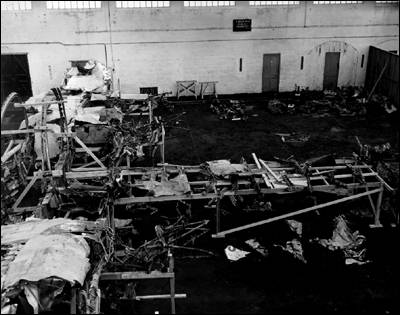 He also remembers it happening to a colleague during a test flight of a De Havilland before it was due to carry passengers to Liverpool. “I was supposed to do that flight, but I was late, and Captain Ivan Hammond was given the job. A control broke and he force-landed in Malahide and the plane tipped up on the sand opposite the hotel. I’ve been in aviation long enough to know these things happen.
He also remembers it happening to a colleague during a test flight of a De Havilland before it was due to carry passengers to Liverpool. “I was supposed to do that flight, but I was late, and Captain Ivan Hammond was given the job. A control broke and he force-landed in Malahide and the plane tipped up on the sand opposite the hotel. I’ve been in aviation long enough to know these things happen.
“But in that Viscount thing I’ve been very worried, because I often took a night trip to England with mails or freight and we used to leave the plane loading at Manchester or somewhere like that. They’d bring you in and park you where it suited them, not where it suited you from an airman’s point of view. An aeroplane, if it is going to be parked on a stormy night, with the winds gusting to 40 miles an hour, should be parked with its nose into the wind. If you park downwind, these control surfaces can be seen to shake and flap all the time, with the wind behind them.
“On the Saturday morning, 24 hours or so before the Tuskar crash, I had to take a plane to London, and the wind was so strong that they had to load the freight in the hangar because the doors were big and they could be damaged by the strong wind. Next day we were having lunch and I heard about the crash ...”

Captain Darby Kennedy was Aer Lingus Chief Pilot until 1947. He rejoined the company in 1960 and retired again in 1971.
Captain Kennedy is certain not all has been told in relation to the Tuskar crash. He says detail ‘explanations’, such as the claim that the piece of trim tab found on a beach north of Wexford was carried there from Wexford Harbour on a piece of seaweed, simply don’t wash. And he suggests that one reason for the failure to find the cause of the crash is because it might show up maintenance procedure inadequacies at the time.
“These are all things that are quite scandalous, and should be opened up again. The sad part about it is ... it suited someone to try and get this thing forgotten.”
©2000 Telling Tales Ltd.
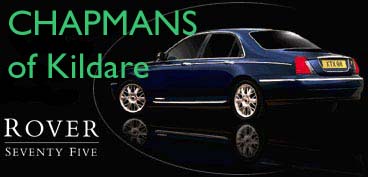
Main Rover, Land Rover and Volvo dealers, Kildare town. Phone 045 521203; Fax 045 521785. See our selection here. And read Brian Byrne's review of the new . |

PROFESSIONAL COUNSELLINGNoreen McCabe, MNAPCPAnxiety, depression, loss, phobias, childhood trauma, eating disorders, relationships, personal growth, coaching for work-related stress. Strictly confidential. Moorefield Clinic, Newbridge. Phone (045) 432111 or call Noreen at (045) 431936; mobile 086 2496823; email dmccabe@tinet.ie |
|
Specialist travel operators to Cheltenham, Aintree, and other major international racing venues. Phone 01 2958901; Fax 01 2958902; Email |
THE LEINSTER PRINTMAKING STUDIOTHE OLD CONVENT, CLANE Artists' resource, Training, Gallery sales. Phone Margaret Becker 045 868168 or 087 2310114 |